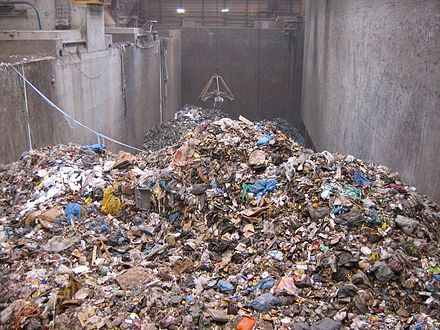JUNE 27, 2024 – Lately I’ve been struck by the sheer volume of consumption for which I alone am responsible. From Chinese take-out to running errands by car to home remodeling projects, not to mention a flight on a commercial aircraft, my lifestyle is one big consumption factory. And I’m hardly the last of the big spenders—or consumers. Yet my direct consumption is but a fraction of the consumption behind the consumption: the factories in China that make most of the stuff we buy; the additional factories that make the multiple layers of packaging for the stuff we buy; the fuel consumed by the trucks and trains that haul the packaged stuff we buy to port; the energy required to pack the stuff we buy into containers, then load the containers onto the ships that burn more fuel to travel halfway around the world, and from coastal ports, by truck and train to giant distribution hub, thence to a smaller distribution center and finally, to the big box store—appropriately named, given how much stuff we buy comes in a big box.
In the practice of our radical, leftist, extremist Democratic persuasion, my wife and I recycle the packaging—at least the portion that can be—and toss the rest in the trash (along with the worn, torn, and forlorn goods that are replaced by the new stuff we buy). Again, in keeping with our proclaimed self-righteousness, we promptly put out of mind what is quickly put out of sight: the detritus of our consumption. Lost in the (plastic) trash bags inside the neat refuse container at the alley’s edge is all the nonsense plastic associated with last night’s Chinese take-out order: empty packets of mustard, soy sauce, and sweet and sour sauce; rice boxes and entrée containers; and fortune cookie packaging (in some cases with cookie and fortunes included).
Everything, but everything, it seems, large and small, comes in at least one, often two or three layers of packaging. You can’t participate in a consumer economy without contributing to the tons upon many metric tons of packaging that such an economy generates for all the stuff that that system produces, distributes, markets, and sells. One must ask: where does it all go, and what are the limits to where it can go?
After pondering the piles of trash and recycling we—I—generate, I asked myself what I—we—can do about it. And that’s where I really hit the wall—or was it a mirror? I can work around the margins, eschewing processed foods, for example, and boycotting take-out or at least not grabbing a fistful of packaged soy sauce on my way out of Fresh New Wok. I could take the bus—and take half a day—to reach my doctor appointments six miles away; I could keep our gas-driven lawnmower instead of going electric—knowing that our electric snowblower came in so much packaging, two rounds of trash/recycling pickups were required to haul away all the materials.
On a macro-scale, however, two related considerations are at play. First, in the grand scheme of things, what I individually consume or don’t consume won’t make a lick of difference. Accordingly, curtailment of my consumption habits and practices must be joined by the rest of the world’s inhabitants who consume at a similarly high rate. But that environmental imperative runs headlong into an economic urgency: growth.
Consumer spending accounts for over two-thirds of the U.S. economy. Included are Chinese take-out and electric snowblowers, and all the other $58,000 worth of stuff and services per person that we buy, eat, drive, use, and discard each year. Consume less, we buy less; buy less and the economy tanks. Soon recession in the here and now would eclipse such only slightly longer-term issues such as being buried alive in plastic, choking by planetary asphyxiation, and running, not walking, from rising sea levels.
In all the promise of AI and all the research among economists, I have yet to learn of a technological or economic solution for the trash-generation problem associated with economic growth. In fact, we seem to be headed in the wrong direction, that being, “more of the same.”
By way of example, via the vast waters of Google search, I landed upon thisisplastics.com, an industry site touting . . . the industry. On the home page appears, “Top 3 Takeaways.” The first is that the plastics industry is “one of the biggest manufacturing industries in the U.S.” Good for us; bad for the planet. The second “top takeaway”: plastics generates $451 billion in shipments per year (vs. $175 billion in total U.S. assistance to Ukraine since Putin’s invasion in February 2022). Third: the plastics industry employees 993,000 Americans directly and 1.5 million indirectly.
I didn’t search annual U.S. spending on “cardboard packaging” or “bubble wrap,” but based on the quantity of those materials that I’ve personally stuffed into our alley-side bins, I’m sure the national total isn’t insignificant.
The dilemma then, is how do we adjust our ways before we’re overwhelmed by our by-products? How can we combine technology, cultural change, and economic transformation to free ourselves . . . from ourselves?
Subscribe to this blog and receive notifications of new posts by email.
© 2024 by Eric Nilsson
